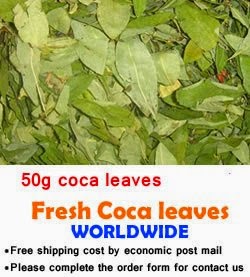Visit: www.bestcoca.com
Growing in greenhouse
In the northen hemisphere, coca
plants grow well in green houses all year round. The longer photoperiod in
summer is no problem to coca plants. They will only grow faster and perhaps
flower, get pollinated, and produce seeds. On very hot days, it is necessary to
cover the greenhouse with a (30%) light blocking sunscreen. This will prevent
the temperatures above 35° C (95°F). Young plants up to 1.5 years always need
susncreen protection. Sometimes even with a sunscreen the temperatures can rise
to 50°C (122°F) and air humidity can drop to 25%. It´s amazing that, with
sufficient water, the adult plants keep their heads up under these conditions.
But younger plants will show signs of stress under the same conditions. Spray
the younger plants with cool water and they will recover.
The shorter photoperiod in the
winter is not a problem. The coca plant will only grow more slowly than she
does in the summertime. It is important to heat the greenhouse if the night
temperature drops below 10° C (50° F). Adjust the heating to 22° C (71.6°F). An
electrical heater of 2 kilowatts is sufficient for 10 mt2. Even a petroleum or
gas burner can be used for heating; the C02 (greenhouse gas) benefits the
growth of the coca plants. You can save a lot of energy by insulating the
greenhouse with a light permeable insulating screen. Air ventilation is
important in the winter time as well. If a petroleum or gas heater is used,
attention to ventilation is especially necessary.








